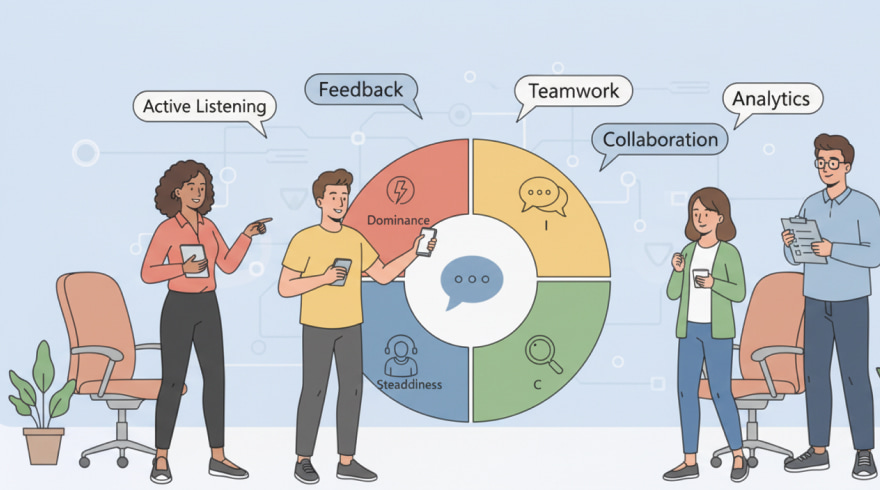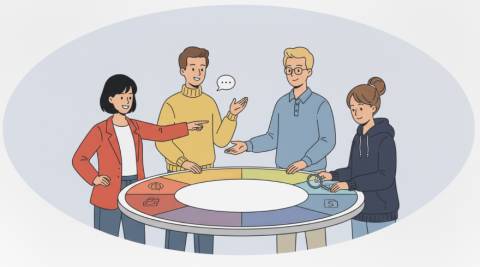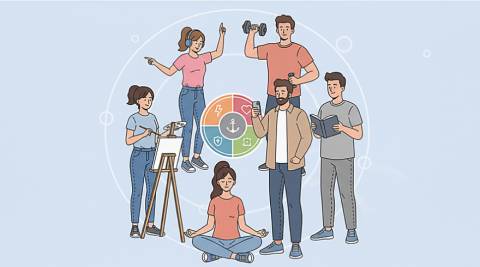The Complete Guide to DISC Assessment Test: Understand, Apply, and Succeed

What Is DISC and Why It Endures
DISC is a behavioral framework that maps how people approach problems, pace, collaboration, and procedures. Rather than labeling personalities, the model highlights observable preferences that influence how we communicate, decide, and coordinate work. Its practicality comes from everyday language, quick adoption, and strong relevance to modern, cross-functional teams.
Across industries, DISC is used to translate complex behavioral tendencies into clear patterns. Among formal instruments, the DISC assessment personality test distills observable preferences into plain-language profiles. Practitioners value how the tool transforms interpersonal friction into shared understanding, creating a common reference that reduces blame and improves collaboration.
By focusing on how people approach problems, pace, influence, and procedures, the framework avoids labels and embraces context. In practical rollouts, the DISC assessment test becomes a shared vocabulary that teams can apply during meetings, onboarding, and feedback. Organizations appreciate that the approach scales well, from one-on-one coaching to enterprise-wide programs, while maintaining accessibility for non-specialists.
The Four Dimensions and Behavioral Insights
DISC commonly illustrates four tendencies: Drive, Influence, Steadiness, and Conscientiousness. Each tendency reflects a set of cues tone, speed, focus, and risk posture that shape expectations and reactions. When teams learn to read these cues, they build adaptive habits that strengthen trust, decrease misunderstandings, and accelerate decisions.
High Drive aligns with decisive action and a direct focus on outcomes, while low Drive favors caution. When participants want a deeper narrative, the DISC personality assessment test connects behavior with stress responses and blind spots. This clarity helps people choose tactics that fit the moment, such as slowing down to gather input or speeding up to meet a critical deadline.
Effective explanations lean on examples like sales calls, retrospectives, or customer escalations. For clients seeking a compact snapshot, the DISC profile assessment test summarizes strengths, watch-outs, and collaboration tips. Leaders can then translate insights into playbooks how to pitch ideas, request resources, or deliver feedback so that style differences become a source of leverage rather than conflict.
Benefits for Individuals, Teams, and Leaders
Applied well, DISC transforms everyday interactions. Individuals gain language for preferences without feeling boxed in, while teams convert friction into curiosity. Managers, meanwhile, use the insights to tune role fit, clarify expectations, and coach people through high-stakes conversations and change initiatives.
As organizations scale, consistent language around collaboration becomes vital. In cross-functional work, the communication assessment test clarifies style differences that derail handoffs and reviews. When feedback gets specific about behaviors and contexts, performance DISCussions turn constructive, which improves engagement and reduces churn.
- Faster meetings through clearer requests and succinct updates
- Higher close rates by adapting pitches to buyer preferences
- Better retrospectives with balanced voices and actionable agreements
- Reduced rework via aligned expectations and explicit checkpoints
- Stronger onboarding through tailored learning and early wins
Digital delivery simplifies scheduling for distributed teams. For remote cohorts, the DISC assessment test online enables quick access and standardized scoring without logistics overhead. This blend of convenience and consistency supports hybrid workplaces where time zones and varying schedules complicate live facilitation.
How to Take It: Methods, Timing, and Preparation
Preparation matters because responses should reflect typical behavior, not idealized scenarios. Read prompts carefully, answer based on recent, real-world contexts, and avoid overthinking edge cases. When possible, schedule the questionnaire during a calm window, free from urgent deadlines that might skew answers toward stress behavior.
Most providers offer timed or untimed questionnaires with 24–48 prompts. If you are exploring options, a DISC assessment free online test can provide a preliminary snapshot before a certified debrief. While a screening experience may be brief, pairing it with guided interpretation ensures that insights translate into practical next steps.
The matrix below contrasts delivery modes so buyers can match format to goals, culture, and budget.
| Mode | Best For | Considerations |
|---|---|---|
| Self-serve questionnaire | Individuals, small teams, fast pilots | Requires clear instructions; follow-up coaching improves impact |
| Facilitated workshop | Cross-functional groups, offsites, leadership cohorts | Needs skilled facilitation; plan activities that apply insights to real work |
| Enterprise program | Large organizations, role-based enablement, hiring enablement | Aligns with competencies and processes; invest in governance and measurement |
Pilot with a small cohort to validate clarity, accessibility, and cultural fit. For quick experiments, a free online DISC assessment test helps you validate training agendas and follow-up plans before a full rollout. Afterward, gather feedback about clarity, relevance, and perceived value to refine messaging and enablement materials.
Choosing a Provider and Interpreting Results
Vendor selection should weigh validity evidence, data privacy, and support for change management. Reputable providers publish technical manuals and offer facilitator training so your team can interpret results responsibly. Look for tools that integrate with your learning stack and provide templates for coaching, hiring, and feedback.
Check whether the vendor provides manuals, validation reports, and norm groups aligned to your audience. Before long-term contracts, a free DISC assessment test can reveal how well the outputs map to your leadership competencies and culture. Consider how reporting formats display strengths, stress patterns, and collaboration tips in ways that busy managers can use immediately.
Budget-sensitive teams still want quality, guidance, and ethical use. With careful vetting, a DISC assessment test free trial may bridge short-term needs while you plan a broader program. As you scale, combine individual feedback with group summaries to tailor interventions for functions like sales, support, engineering, and operations.
FAQ: Common Questions About DISC
How accurate is a DISC result compared with other workplace tools?
Well-constructed instruments undergo reliability and validity testing, and reputable vendors publish technical documentation. Accuracy also depends on honest responses and appropriate interpretation. Treat the output as a starting point for dialogue, not a rigid label.
Can results change over time?
Core preferences tend to be stable, but context matters. Major role shifts, new leadership, or sustained stress can influence how behaviors show up at work. Retesting after significant change can help recalibrate development goals.
What is the best way to introduce DISC to a skeptical team?
Start with a clear purpose tied to real work, not novelty. Use concrete scenarios meetings, handoffs, customer conversations to show immediate utility. A brief pilot with volunteers often builds momentum through visible wins.
Should DISC be used for hiring decisions?
Use behavioral insights to inform interviews and onboarding, not to exclude candidates. Focus on job-relevant behaviors and ensure compliance with local regulations and fair-use guidelines. Combine multiple data sources for sound hiring choices.
How do we sustain impact after the initial workshop?
Create playbooks, refreshers, and manager toolkits that reinforce practical behaviors. Add short exercises to existing rituals standups, one-on-ones, and retrospectives to normalize application. Measure outcomes like meeting efficiency, handoff quality, and engagement to keep the program accountable.
As you embed these practices, momentum builds through better conversations, tighter execution, and a shared language for improvement.
Latest News



